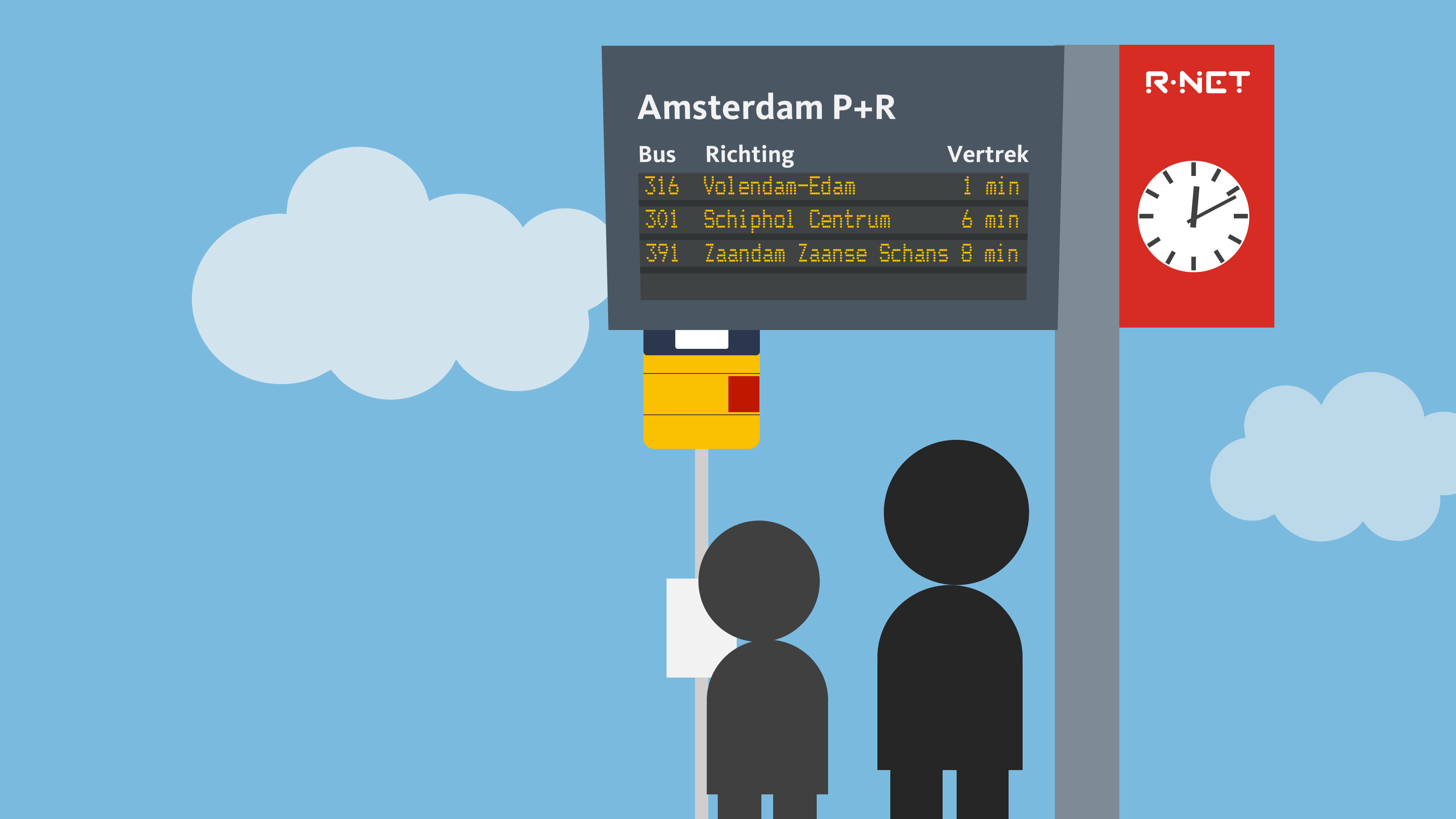Using data to improve your bus and train rides

I’ve always liked trains and buses as a kid and whenever I visit a new city I still make sure to check out its public transport system, so it probably doesn’t come as a surprise that I started my career at an IT company that specialises in traffic and transport systems! This page gives you a brief overview of some of the more exciting and impactful work that I’ve done.
A display at your stop tells you that your bus has been delayed for two minutes, a system in your bus announces the next stop, and Google Maps tells you which bus you should take. Public transport data is so ubiquitous nowadays that we all just take its presence for granted, but it hasn’t always been like this.
We worked on a system that integrates timetable information with real-time updates on vehicle positions and stop events to generate a single data feed that can be used to power anything from information displays to journey planners.
You can play with the data feed yourself for free via NDOV Loket.
The concessions for bus and train operations that transport authorities award to public transport companies come with a decent amount of quality criteria that encourage the transport company to provide good service to a city or region.
To help these authorities monitor the performance of transport operators, we would combine timetable information with real-time position data to automatically generate weekly, monthly, and yearly reports on numerous performance indicators like data quality, and .
Bus and train networks consist of a large number of stops and stations. The company that owns and maintains them obviously knows where they are and what they look like.
But others may be interested in this information as well: if the stop is also served by other transport operators, they may wish to know its location and , a wheelchair user might want to know whether a bus stop is accessible, and someone who is building a trip planner may want to know its exact location.
To facilitate the maintenance and free distribution of this data, we built a central stop database and a web application that lets key stakeholders securely access and modify stop and station attributes.
Exports of that database can be accessed freely via the NDOV Loket.
Working on all these centralised, national systems that process abstract data and information sometimes felt like working in an ivory tower, far removed from the things that passengers actually see and experience.
Fortunately we also maintained a great number of digital displays at bus stops in the Amstelland-Meerlanden region (which includes Schiphol). Now, I know what you’re thinking. “Maintenance” sounds a bit pedestrian – and it usually is!
These passenger information systems are built to resist anything from harsh weather to vandalism, so there is no need to actively maintain them. But unexpected failures do still happen, and we made sure those are resolved as quickly as possible.
I worked at an IT company that specialises in traffic and transport systems, but it was certainly not the only one. There are several other, much larger companies that also specialise in some areas of traffic and transport. We would regularly compete against this small pool of competitors for tenders by transport authorities, railway infrastructure organisations, and governments.
I can’t actually tell you very much about these processes for legal reasons, but (assuming that you win once in a while) they sure are fun!


